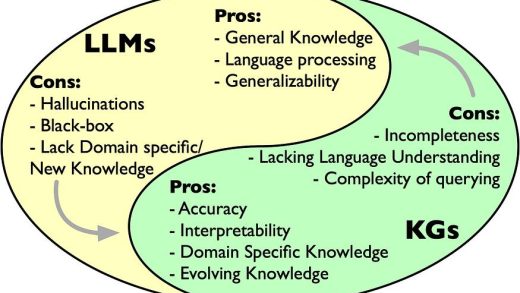1. Industry Risk Analysis
(1) Policy Risk
The tableware recycling and cleaning robot industry faces potential risks at each stage of the policy lifecycle:
– During the policy formation period, the rules are vague. The state has not yet issued unified technical standards and industry regulations, resulting in blind spots in compliance for enterprise R & D.
– During the policy implementation period, local regulatory scales vary. Some regions may temporarily tighten requirements such as sewage discharge and waste classification due to environmental protection pressure, forcing enterprises to repeatedly adjust equipment parameters.
– During the policy adjustment period, the risk of subsidy reduction is significant. If local governments cut their procurement support for intelligent environmental protection equipment, it will directly impact the project’s profit model.
– During the policy iteration period, the upgrade of international ESG (Environmental, Social, and Governance) standards may lead to the re – evaluation of existing technical routes, increasing the sunk cost of technology.
(2) Economic Risk
During periods of slow economic growth or recession, the catering industry may cut its budget for automated equipment due to weak consumer demand, resulting in a shrinking market. As a high – cost technological product, tableware cleaning robots are likely to be downgraded to “optional investments”.
– In the economic downturn, the financing environment tightens. It becomes more difficult to obtain the large amount of funds required for hardware R & D and market promotion.
– Fluctuations in supply chain costs (such as changes in the prices of chips and metal materials) will squeeze profit margins.
– The increasing bankruptcy rate of small and medium – sized catering enterprises will directly affect the payment collection stability of equipment leasing or sales models, creating cash – flow pressure.
(3) Social Risk
The tableware recycling and cleaning robot industry faces risks of inter – generational value conflicts:
– Young consumers pay more attention to the sense of technology and environmental protection efficiency, while the middle – aged and elderly groups are resistant to the replacement of human labor by automation, believing that the traditional service model is more reliable.
– In terms of technology trust, Generation Z accepts the hygiene standards of robot cleaning, but some consumers question the ability of machines to handle complex oil stains, which may arouse public concerns about hygiene hazards.
– Regarding the controversy over labor substitution, the industry may be regarded as squeezing the employment space of low – skilled workers, especially in labor – intensive catering scenarios, which may trigger social media pressure.
– There are also gaps in policy adaptability. Local governments lack unified standards for the supervision of emerging technologies, and the differences in inter – generational management thinking may lead to a sharp increase in regional compliance costs.
(4) Legal Risk
- In terms of environmental protection compliance, it is necessary to ensure that wastewater discharge and the use of chemical cleaners meet the standards. Violations will be punished.
- For product safety, international certifications (such as CE, ISO) are required to avoid disputes over personal injury caused by product defects.
- The risk of data privacy involves violating the “Personal Information Protection Law” when collecting users’ tableware usage data.
- In terms of intellectual property, it is necessary to avoid the risk of technological patent infringement to prevent lawsuits.
- Regarding labor laws, it is necessary to handle the compliance issues of layoffs caused by the replacement of human labor by equipment.
- For contract risks, it is required to clearly define the cleaning responsibilities and default clauses with catering enterprises.
- For industry access, special equipment operation qualifications are required. Otherwise, there is a risk of business suspension.
2. Entrepreneurship Guide
(1) Suggestions for Entrepreneurial Opportunities
- Focus on high – turnover scenarios such as university canteens and fast – food chains to develop modular robots. Adapt to different types of tableware (bowls, plates, lunch boxes, trays) through a detachable structure.
- Embed an image recognition module to detect the concentration of cleaning residues in real – time, and form an optimization model for detergent usage to reduce consumable costs by 30%.
- Build an Internet of Things platform for tableware status to achieve unified scheduling for regional customers (such as commercial complexes), and charge service fees (0.1 yuan per piece) based on the number of cleaned items instead of the equipment sales model.
- Prioritize the layout in the Yangtze River Delta urban agglomeration, and take advantage of the government’s “smart restaurant” subsidy policy to establish demonstration sites.
(2) Suggestions for Entrepreneurial Resources
- Entrepreneurs should focus on integrating scientific research institutions in universities to obtain modular technology authorization and reduce R & D costs.
- Cooperate with industrial design companies to develop standardized functional modules and rapidly iterate product prototypes.
- Use the asset – light model of contract manufacturers to complete the production of prototypes.
- Connect with hotel/catering industry associations to establish pilot cooperation to obtain cleaning scenario data. Combine environmental protection subsidy policies and prioritize the layout in government procurement scenarios such as schools and government canteens.
- It is recommended to cooperate with vending machine operators to explore the equipment leasing and revenue – sharing model, and apply for utility model patents to build a technological barrier.
- On the supply – chain side, establish a dual – supplier mechanism for core components such as motors and sensors, and focus on training an equipment maintenance team to build a local service network.
(3) Suggestions for Entrepreneurial Teams
In the tableware recycling and cleaning robot industry, entrepreneurial teams need to quickly form a complementary team with technical, marketing, and operational capabilities.
– Prioritize recruiting core members with experience in robot hardware development (such as robotic arm control and sensor fusion) or a background in AI vision algorithms.
– Match with business leaders who are familiar with the B – side customer needs of the catering industry (such as the supply – chain resources of chain restaurants and the interpretation of hygiene standard policies).
– At the same time, introduce members with experience in hardware supply – chain management (such as cost control and mass – production ramp – up).
– In the early stage, the team structure is recommended to be flat to improve the R & D iteration speed. Reserve 15% – 20% of the option pool for equity distribution to bind key talents.
– The founder must lead the establishment of an agile cooperation mechanism of “technology verification + customer scenario feedback”, and synchronize product test data and customer pain – point iteration lists weekly.
(4) Suggestions for Entrepreneurial Risks
Entrepreneurs in the tableware recycling and cleaning robot industry need to prioritize controlling technological stability and compliance risks:
– Focus on optimizing the durability and cleaning efficiency of equipment in complex scenarios, and rapidly iterate algorithms and mechanical structures through small – scale catering scenario tests.
– Strictly follow food safety regulations, ensure that the cleaning process meets hygiene standards and obtain relevant certifications (such as FDA, CE) to avoid legal disputes.
– Establish a multi – regional supplier cooperation mechanism to disperse the risk of supply – chain disruptions for core components (such as sensors and robotic arms).
– Adopt the “hardware leasing + cleaning service subscription” model to lower the upfront investment threshold for customers, and collect usage data to verify market demand and pricing strategies.
– Plan for differentiated functions (such as waste classification recognition and water – saving modules) in advance to cope with homogeneous competition, and control R & D costs to avoid premature depletion of cash flow.





